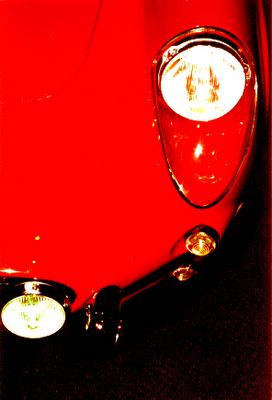Market Guide Madness Part II

In Part I of this piece, I addressed the concerns of the market-curious who find the discrepencies between various market and price guides to be confusing. Focusing first on the Ferrari Market Letter and quoting the FML's Gerald Roush, I attempted to shed some light on the methods used in developing his Asking Price Index and went on to explain why, in the case of older, collectible Ferraris, the FML's figures are consistently lower than those presented by its rivals and seem to fall far short of current asking prices.
In this installment, I'll be dealling with those two rivals, Cavallino and Sports Car Market, but first I want to address a question posed by one of my readers who asked why I had chosen to focus on these three sources while ignoring the other two mentioned by Mr. Roush, the Cars of Particular Interest Collectible Vehicle Value Guide and the N.A.D.A. Classic, Collectible, and Special Interest Car Appraisal Guide & Directory. To answer that question, the whole purpose of this two part piece is to address the questions and concerns of my readers and other enthusiasts, owners and market-watchers that I come in contact with. Whenever I've been asked about the disparity of various market/price guides, it has always been FML, Cavallino and Sports Car Market that were brought up. I've yet to have one single person quote either of these other two sources when expressing their confusion. If you have a specific question about the figures offered by either the CPI or NADA guides, feel free to ask and I'll do my best to provide an accurate answer.
Cavallino Guida and Sports Car Market Price Guide
I've combined the two of these into a single segment because, the truth is, they both use exactly the same method to determine the values published in their guides. To learn more about the process, I spoke to Southern California horse trader Michael Sheehan, who not only happens to be one of the "selected dealers" surveyed by Cavallino for the figures published on their Guida pages, but he also consults with Sports Car Market on the Ferrari values offered by their Price Guide. With so much in common, why then do the figures in these two currently differ, even if only slightly? The simple reason is that Cavallino updates and publishes their guide every two months while SCM does so only once per year, the result being that Cavallino's figures are more current and reflect more recent market changes.
According to Mr. Sheehan, whenever possible, the figures he provides are based on actual selling prices of Ferraris worldwide. Of course, no one can possibly know the selling price of every vintage Ferrari that changes hands, but he is very well connected within the Ferrari community, sells or brokers a number of these cars each year himself and, like me, makes it a point to watch the market like a hawk.
When actual selling prices either aren't available or just aren't abundant enough, a certain bit of common sense (something that an arethmatic formula can't provide) is called for. Michael refers to this as making "an educated guess." When putting a value on one of the rarer models, it might be the case that an example hasn't changed hands for several years. Even so, if the market is experiencing an overall up or down swing, it only makes since that the value of this particular model should follow suit. In some instances, similar models might have experienced dramatic movement within the market place, making it reasonable to assume that this car should be moving similarly. For example, if 250 SWBs and 250 TdFs are both enjoying healthy value increases reflected by recent sales figures but a 250 Interim Berlinetta (essentially a TdF with SWB bodywork) sale hasn't been recorded in years, our educated guessing would tell us that Interim prices would be affected accordingly.
Now, while this method seems to be a fairly accurate way to value some of the more common cars that change hands with some frequency, in the case of the rare and obscure, one can be, and often is, surprised by actual selling prices. After all, the buyers and sellers of 7+ figure automobiles are few and far between and what one is willing to pay or what one is willing to let one go for may have little to do with what Cavallino, Sports Car Market, Michael Sheehan or you and I think that that car is worth.


